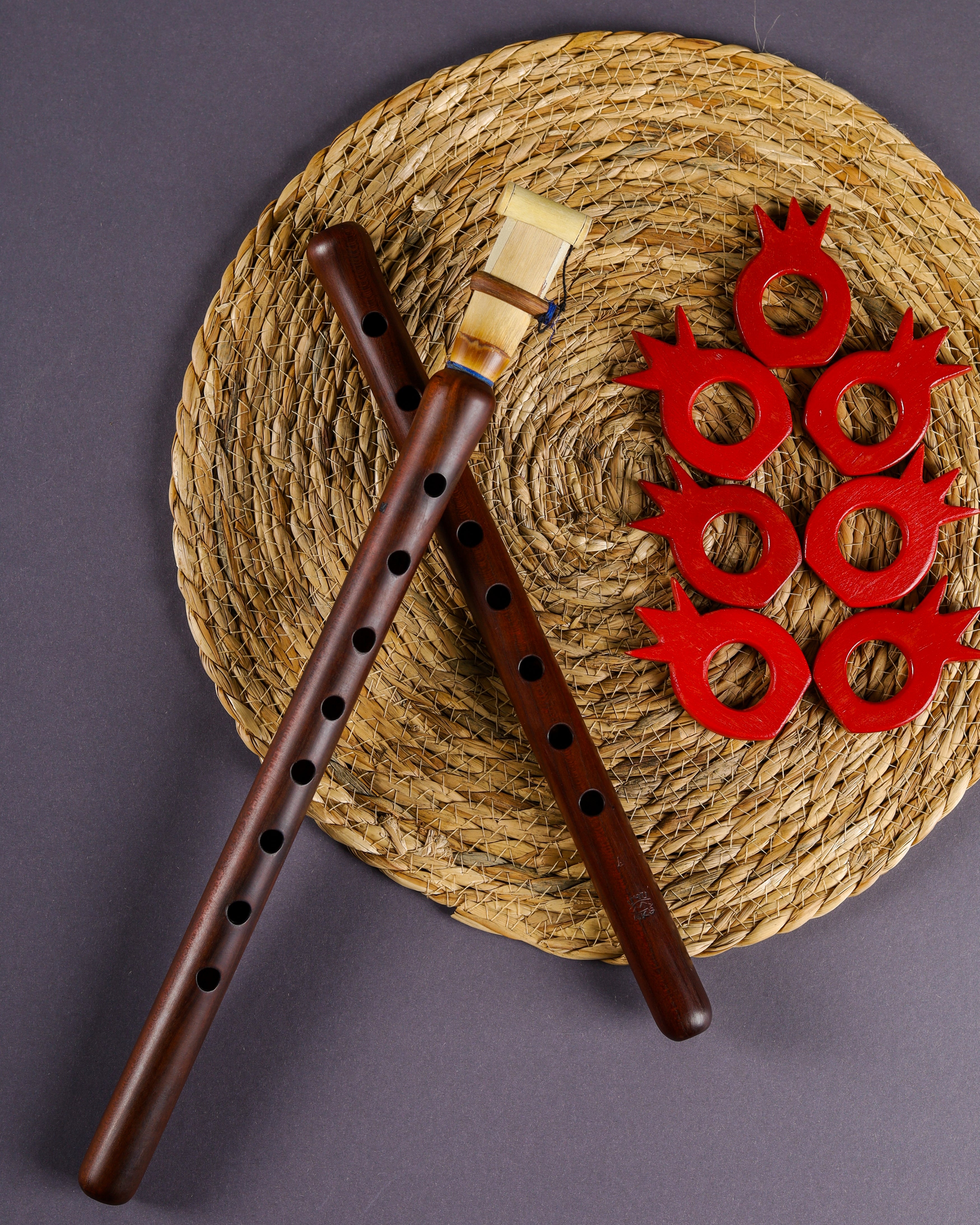Introduction
Due to the lack of online documentation on the Duduk , it is common to see buyers of this instrument misuse it, sometimes even leading them to abandon their learning when trying to produce a sound becomes too complicated. Therefore, La Maison du Duduk provides a set of instructions to follow during your first steps with the Duduk.
Mode d'emploi
Even before receiving your Duduk, it is important to know that due to the hollow carved in the instrument, it becomes relatively fragile. Although, apricot wood is known for its robustness, when used for the construction of the Duduk, it is kept away from moisture for many years (5-12 years) before being drilled and worked, which greatly affects its strength. Therefore, it is advised to handle the Duduk delicately to avoid any shock with other objects. Once in your hands, the instrument is no longer at risk, and it’s now time to correctly place the reed on the instrument.
The reed of the Duduk is made of two thin reeds that are extremely fragile, so we recommend never handling the reed by the top of its body, but rather by the bottom, at its blackened and hard base.
Steps to prepare the Duduk reed:
- While keeping the mouthpiece closed, fill the reed completely with warm water from the bottom of its body.
- Leave the water in the reed for about ten seconds, then drain the water.
- Let the reed dry between 10 and 20 minutes.
- Once the 20 minutes have passed, take your reed and place it on the Duduk so that your lips rest naturally, without tilting your head.
- When the reed is well placed, remove the mouthpiece from the reed, then with the help of the tuning ring, tighten the space between the two reeds until you get a spacing of 2mm, which will make it easier to produce sound (remember, if the reed is too tight or too loose, producing a sound will be very complicated, so adjust the opening according to your needs and capabilities).
- Some reeds may take longer than others to prepare (especially if they are new), if you find that the sound is not warm and soft enough after 20 minutes of drying, moisten and let it dry a second time, play some low notes abruptly, then let your reed rest for another ten minutes and then notice the difference.
It is important to know that the Duduk is a handcrafted instrument that, like any product of its kind, has its complications and peculiarities. It is not uncommon for beginners to complain about the sound of their instruments, but it is good to know that the warm sound of the Duduk is assured not only by the quality of the instrument but also by the quality of the musician's breath (article on Breathing Techniques).

